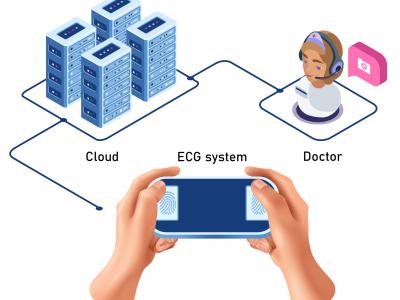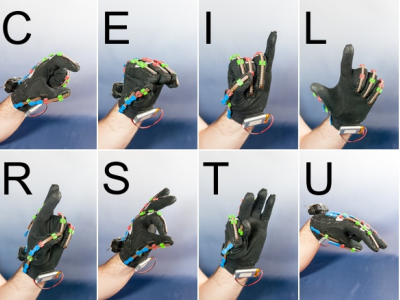Wearable Sensing
Please cite the following paper when using this dataset:
N. Thakur, “MonkeyPox2022Tweets: A large-scale Twitter dataset on the 2022 Monkeypox outbreak, findings from analysis of Tweets, and open research questions,” Infect. Dis. Rep., vol. 14, no. 6, pp. 855–883, 2022, DOI: https://doi.org/10.3390/idr14060087.
Abstract
- Categories:
 3607 Views
3607 Views
These data sets are from the experimental part of the paper, mainly including hip angle obtained by IMU, plantar pressure obtained by FSR, gait division algorithm results, oscillator phase and so on.
- Categories:
 123 Views
123 ViewsIn this paper, we develop an internet of medical things (IoMT)-based electrocardiogram(ECG) recorder for monitoring heart conditions in practical cases. To remove noise from signals recorded by these non-clinical devices, we propose a cloud-based denoising approach that utilizes deep neural network techniques in the time-frequency domain through the two stages. Accordingly, we exploit the fractional Stockwell transform (FrST) to transfer the ECG signal into the time-frequency domain and apply the deep robust two-stage network (DeepRTSNet) for the noise cancellation.
- Categories:
 375 Views
375 ViewsThe following database contains over 25,000 records collected using the author's data glove while researching 16 static letters of the Polish Sign Language alphabet.
Data are readings from 10 piezoresistive sensors placed over the fingers of the hand expressed in ADC values.
Data are from 15 test subjects, each of whom performed each letter ten times
- Categories:
 36 Views
36 ViewsThe accelerometer data has been collected using one smartphone carried by subjects, which are caregivers and nurses, when they were conducting daily works at a healthcare facility. The smartphone was carried in an arbitrary position such as a pocket. There are a total of 27 activities divided into 4 groups.
- Categories:
 162 Views
162 ViewsThe Baseline set described in the IEEE article (https://ieeexplore.ieee.org/document/10077565) as Baseline_set contains 1442450 rows, where the number of rows varied between 15395 and 197542 for the 16 subjects; the average per subject being 69095 rows. The data set is filtered and standardized as described in III.C in the submission . The other data sets used in the article are derived from Baseline set.
- Categories:
 1097 Views
1097 Views
This is the data for the paper "Fusion of Human Gaze and Machine Vision for Predicting Intended Locomotion Mode" published on IEEE Transactions on Neural Systems and Rehabilitation Engineering, 2022.
- Categories:
 266 Views
266 Views
We collect IMU measurements under three different patterns: Fixing a smartphone in front of his chest (chest), swing a smartphone while holding it in his hand (swing), and putting a smartphone in his pocket (pocket). We use Google Pixel 3XL for the pattern of chest and Google Pixel 3a for the patterns of swing and pocket. The sampling frequency of each measurement is fixed to 15Hz. We collect the measurement of 111 paths in total, categorized into 4 types. We partition them into 84 and 27 paths, used for training and testing, respectively. It takes 10 hours to collect all datasets.
- Categories:
 211 Views
211 ViewsVision is important for transitions between different locomotor controllers (e.g., level-ground walking to stair ascent) by sensing the environment prior to physical interactions. Here we developed StairNet to support the development and comparison of deep learning models for visual recognition of stairs. The dataset builds on ExoNet – the largest open-source dataset of egocentric images of real-world walking environments.
- Categories:
 3102 Views
3102 Views





